Banco de la República Art Collection
Piece: 6,222 (as of August 2018)
Date of establishment : November 1957
Location: Miguel Urrutia Art Museum, Luis Ángel Arango Library
City : Bogotá
Website : Art Collection Online
The Banco de la República Art Collection is one of the largest collections in the country. After over six decades of rigorous and continuous collecting, today it holds more than 6,000 works by Colombian, Latin American, and international artists. This collection has grown thanks to the annual acquisition program and the various donations it receives. The most significant donation was made by the master painter Fernando Botero.
History
Beginnings and first acquisitions
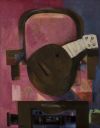
The Banco de la República Art Collection began in November 1957 with the acquisition of three works: Mandolina sobre silla (Mandolin on Chair) by Fernando Botero, Ángel volando en la noche (Angel Flying in the Night) by Cecilia Porras, and El Dorado No. 2 by Eduardo Ramírez Villamizar, pieces included in the exhibition Modern Art Salon organized by Banco de la República at the Luis Ángel Arango Library, then recently inaugurated.
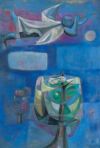
According to José Darío Uribe, general manager of Banco de la República in the early twenty-first century, "the main impulse in establishing these collections has not been the desire to amass, but rather the interest in preserving and making available to all Colombians works of art that contribute to the intellectual development of the country.” Among the first acquisitions, it is worth mentioning a series of watercolors by the British landscape painter and artist Edward Walhouse Mark, from which the collection of nineteenth century travelers was begun, and which at the same time reflects another of the objectives that Banco de la República set for itself with the development of the collection: to gather a set of historical and representative pieces of national art that would provide a complete idea of what Colombian visual art has been from colonial times to the present. Similarly, in the early years of the collection, one of the priorities was to include works by young artists, winners of art salons, or active figures in the local art scene. According to the critic Juan Manuel Ospina, "more than certainties there were clear hopes in relation to these artists, that time would transform into the Colombian masters of the twentieth century: Fernando Botero, Enrique Grau, Edgar Negret, Alejandro Obregón, Cecilia Porras, Eduardo Ramírez Villamizar, Carlos Rojas, and Guillermo Wiedemann" (Juan Manuel Ospina, Permanent Collection of Paintings, Banco de la República, 1985). Later, and following this particular interest, in the eighties, nineties, and noughties, names such as Bernardo Salcedo, María Fernanda Cardoso, Santiago Cárdenas, María Teresa Hincapié, José Antonio Suárez, Liliana Angulo, and Luis Caballero would be included In November 1960, the first work was acquired from a foreign artist, Oswaldo Guayasamín's Cabeza de hombre llorando (Head of a Crying Man), thus making the collection international. According to the critic Carolina Ponce de León, this new interest was "an initiative that translated into individual and collective exhibitions that were registered, in those first years, with the acquisition of works by José Luis Cuevas, Roberto Matta, Manuel Felguerez, Fernando de Szyszlo, Armando Morales, Abularach, and Vicente Rojas, among others" (Carolina Ponce de León, Anthology of Works from the Permanent Collection, Banco de la República, 1990).
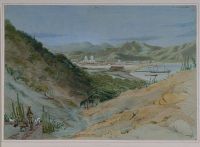
A committee for the growth of the collection
Between 1984 and 1985, with the restructuring of the Cultural Division, the Banco de la República established an advisory committee for the visual arts made up of artists, cultural managers, art critics, and historians. The committee established the parameters to be followed in the acquisition of new works, a strategy that sought to optimize purchasing tactics and acquire pieces that would allow it to illustrate the gradual development of art. According to Carolina Ponce de León, "forming a collection is an activity that is to some extent random: it depends largely on the opportunities offered by the market and therefore it is difficult to systematically fill gaps. [...] In the case of the Banco de la República Art Collection, there is a tendency towards three main fronts: the first is to complete the collection of nineteenth century works. To this end, costumbrista watercolors by Ramón Torres Méndez, miniatures by José María Espinosa, and graphic works by Alberto Urdaneta were acquired. [...] The second front are twentieth century creations of historical and artistic interest, for instance the decision to include Débora Arango, Darío Jiménez, and José Rodriguez Acevedo, artists who were not recognized for their artistic merit in their time. [...] The third front addresses the works of artists from more recent generations, who, among others, have been nourished by the works of the participants in the Nuevos Nombres (New Names) program" (Carolina Ponce de León, Anthology of works from the permanent collection, Banco de la República, 1990).
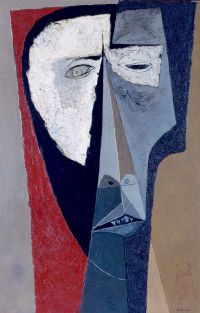
The Botero donation
Another reason for the increase of the collection has been donations made by private collectors. The most generous by a distance was that of the artist from Antioquia Fernando Botero in the year 2000. Botero donated 123 of his own works and 85 by international artists. These pieces, permanently exhibited at the Botero Museum, provide a comprehensive idea of the progress of modern painting and sculpture. The collection brings together such outstanding artists as Picasso, Leger, Renoir, Monet, Dalí, Giacometti, Beckmann, Freud, Calder, and Bacon, the oldest work being Gitane au tambourin (prior to 1862) by Camille Corot, and the most recent the great oil painting by Barceló (1998).
A collection beyond borders
Miguel Urrutia Montoya, general manager of Banco de la República from 1993 to 2004, wrote that "in recent years we have managed to acquire international works that improve the representativeness of the Art Collection. Among them are an Amelia Pelaez, a Xul Solar, two works by Morandi, a donation of six eighteenth century landscapes, several Japanese woodcuts, two landscapes by Jan Van Kessel, and a Le Parc" (Miguel Urrutia Montoya, Banco de la República International Art Collection, Villegas Editores, 2004). The collection also includes drawings ranging from the Renaissance to Derain and Tobey, and small format works by Klee and Kandisky.
Current operations
With the intervention of five external curators and its museums’ specialized staff, Banco de la República presents the new exhibition of its Art Collection. The proposal encourages dialogues between Colombian and international art, while placing side by side works from different historical periods in order to establish various thematic and aesthetic relationships between them. The 16 halls exhibiting more than 600 works by artists dating from the fifteenth to the twenty-first century opened to the public on July 26, 2013. Admission is free. The substantial change lies in the way the Art Collection is presented: from now on there will be five independent curatorial perspectives, in which Colombian, Latin American, and international works interact to address the most representative historical moments of the collection. For this purpose, some of the most outstanding researchers of the local art scene were invited: Beatriz González, Jaime Borja, Álvaro Medina, Carmen María Jaramillo, Sylvia Suárez, Carolina Ponce de León, and Santiago Rueda Fajardo. Thus, for instance, landscapes by the Frenchman Paul Gaugin and the Colombian Andrés de Santa María are contrasted with the contemporary idea of landscape provided by the Brazilian Vik Muniz; similarly, the colonial series of portraits of crowned nuns are contrasted with the Homenaje a Santa Teresa (Homage to Saint Teresa), 2009, by the Serbian performer Marina Abramovic. The first curatorial perspective runs from the sixteenth to the eighteenth century and emphasizes the relationship of the colonial Americas with the rest of the world, an investigation by historian Jaime Borja which, among other works, includes Giovanni Francesco Maineri's Madonna and Child from 1497, the oldest work in the new exhibition. In July 2013, as part of Banco de la República’s ninetieth anniversary celebrations, the curatorial work of artist and researcher Beatriz Gónzalez on the nineteenth century opened, along with the perspective of the researcher Álvaro Medina, which covers artistic production from 1910 to 1940 and a joint proposal by art historians Carmen María Jaramillo and Sylvia Suárez that investigates production from 1950 to 1980. Finally, in the last months of 2013, the last of the curatorial outlook was opened to the public. It is dedicated to young art (from 1980 to first years of the twenty-first century), by the researchers Carolina Ponce de León and Santiago Rueda. It is on display at the Luis Ángel Arango Library’s Casa Republicana. Another of the substantial changes lies in the number of works exhibited: 800 pieces and nearly 250 artists on display, up from the 280 works included in the previous exhibition of the permanent collection. The formats on display include painting, sculpture, drawing, prints, photography, video, and installations. The new exhibition brings together a considerable number of historical and representative pieces of Colombian art and many of the most important artists of all times: Gregorio Vásquez de Arce (1638-1711), José Maria Espinosa (1796-1883), Ramón Torres Méndez (1809-1885), Andrés de Santa Maria (1860-1945), Alejandro Obregón (1920-1992), Enrique Grau (1920-2004), Fernando Botero (1932), Eduardo Ramírez Villamizar (1922-2004), Miguel Ángel Rojas (1946), Luis Caballero (1943-1995), Bernardo Salcedo (1939-2007), Antonio Caro (1950), Oscar Muñoz (1951), and others. Some of the notable international artists include Jan Brueghel “the Younger” (1601-1678), Paul Gauguin (1848-1903), Pedro Figari (1861-1938), Armando Reverón (1889-1954), Rufino Tamayo (1899-1991), Joaquín Torres García (1874-1949), David Alfaro Siqueiros (1896-1974), Julio Alpuy (1919-2009), Wilfredo Lam (1902-1982), Julio Le Parc (1928), Jesús Rafael Soto (1923-2005), Carlos Cruz Díez (1923), Gyula Kosice (1924), Chuck Close (1940), Vik Muniz (1961), Marina Abramović (1946), and others.
The permanent exhibition
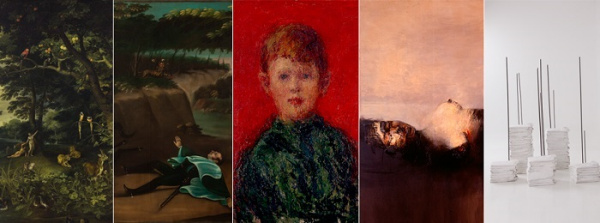
Since 1994, a selection of works from the collection has been permanently exhibited in some rooms of the Mint. Angela María Pérez Mejía, Banco de la República’s cultural director, said at the beginning of the twenty-first century that "over the course of 50 years, the central bank has managed to consolidate a collection of more than 5,000 works of art in all media: painting, sculpture, drawing, engravings photography, artists' books, and, more recently, video and installations (Angela María Pérez Mejía, 50 years of art in the Luis Angel Arango Library, Banco de la República, 2007).
Early modern times
The Early Modern Times room of the Banco de la República Art Collection contains works of art from the sixteenth to eighteenth centuries. Through them, we wanted to show the features of modernity evident in colonial works, as well as their traces in modern and contemporary art. Although most colonial visual culture revolved around religious themes, the choice of these reveals aspects of colonial life. The painter, as an institution for visualization and observer of society, also portrayed that which affected the social order. Artistic expressions were oriented to fulfill a specific function within society. This is the meaning of the titles inside the room, since art taught central aspects of Christian doctrine or dogma and provided guidelines for the ordering of society. Just as art was intended to move the feelings of the devotee, it also supported individual redemption or showed ways to mortify the body.
The room is organized around six thematic axes: The Holy Family, Art for Teaching, Art for Moving, The Life of Martyrdom, Mortification, The Flower Garden, and Social Body Painting. The selection of works arranged in the room includes paintings, sculptures, and engravings. Among them are works by the New Granada painters Gregorio Vásquez de Arce y Ceballos, Joaquín Gutiérrez, Antonio Acero de la Cruz, and Victorino García Romero, who is credited with the series of the crowned nuns that has also been included in the exhibition. Also on display are paintings by Europeans Jan Van Kessel, Pieter and Jan Brueghel, Jacobo Negretti, Angelino Medoro, and Giovanni Battista, among others, providing European contrast and context for the Latin American colonial works. It also highlights the presence of contemporary artists whose works are in dialogue with the iconography and context of colonial time, among them, the Colombian Juan Antonio Roda and the Serbian Marina Abramovic. The themes and problems proposed by this early modernity were not exhausted either by the French and industrial revolutions of the late eighteenth century, or by the independence processes of the early nineteenth century in the case of the Americas. Rather, they opened a catalog of possibilities that the various modernities and arts of the nineteenth and twentieth centuries took on the task of collecting, expanding, and transforming. With different interests and proposals, Colombian artists such as Emiliano Villa, Enrique Grau, Fernando Botero, José Alejandro Restrepo, Nadín Ospina, Juan Camilo Uribe, María Villa, and Juan Antonio Roda, to name a few examples, have interpreted that early modernity, a world that would appear to have not changed very much. Borja, Jaime (2012). Curatorial text of the hall "Los primeros tiempos modernos" (Early modern times). Banco de la República Art Collection, August 2012.
Ruptures and continuities
Rarely in Colombia has there been discussion about whether art was transformed in the nineteenth century or whether the systems of expression of colonial society prevailed. These positions were argued by two Colombian art critics. The first of them, Gabriel Giraldo Jaramillo, speaks of an "emancipation of art" since Independence: "As for the fine arts, we can affirm that political independence brought with it a definitive pictorial emancipation and that throughout the artistic history of the nineteenth century we do not find any trace of the principles and norms that guided the colonial art of Nueva Granada.” The other critic, Eugenio Barney Cabrera, only accepts "simple formal variations" and "technical innovations" in art, "but in no way aesthetic positions previously unknown." He continues: "If thought did not change, if customs remained in force, if the socioeconomic structure had simple surface modifications, then the cultural sequence must have been similar to the colonial one.” At present the debate has been extended to Colombian historiography. Eduardo Posada Carbó updates the discussion because he considers that it is "a conception of history that was imposed here a few decades ago" in which "the entire hierarchical structure of the Colony would have been passed on to the Republic without being broken or stained.” He adds that "although there were continuities, Independence also represented important ruptures with the Colony: political and social spaces were opened for figures of humble origin [...] It is not true that nothing changed after Independence.” Paraphrasing Posada Carbó, in the art of the nineteenth century there are ruptures and continuities. Ruptures such as the change of models and themes—ordinary people portrayed as heroes—and continuities, particularly in the systems of expression. They had inherited the workshop trade and, thanks to the Botanical Expedition, the observation of nature and the technique of miniature. The art of the nineteenth century began with good portent: it was dominated by draughtsmen who practiced art—a science that earned it a worldwide place in this specialization from the late eighteenth century and a technical development that allowed a change in themes and allegories. Is it possible that they were considered minor painters because they were in the service of science? Were they slaves of science? Were they formerly slaves of the Church? It does not matter. While in Europe Realism, Impressionism, and Symbolism prevailed, Colombian artists resorted to strategies that show evident breaks with the past: engraving, caricature, photography, costumbrismo, and landscape. The presentation of the works in the nineteenth century collection of Banco de la República raises more questions than answers. The important thing is to establish how radical the ruptures were and whether the continuities were apparent or real. The images speak. They identify schools of art, trends, styles, the handiwork of craftsmen, of artists who arouse interest and a critical look at our history of art. Gonzalez, Beatriz Aranda. Art of the nineteenth century. Curatorship and texts.
The avant-garde renovation
Latin American art in the last decade of the nineteenth century consolidated the academic canons of realism and saw the emergence of the early audacity of Andrés de Santa María. In the period from 1900 to 1930, traditional nineteenth century trends and the first attempts at liberation from canons ran side by side, in alignment with the fresh experiences of European avant-garde movements. The degree of nearness to the contemporary developments of the period varied according to the country. Argentina, Uruguay, Brazil, and Mexico accepted the avant-garde in various ways, while Colombia was reticent. The slow assimilation of the new tendencies is what allows us to speak of the avant-garde renovation. The first thirty years of the twentieth century were marked by the rise of landscape, a legacy that came from the teachings of the Spanish painters Luis de Llanos and Enrique Recio y Gil in the workshops they directed at the National School of Fine Arts in the last decade of the nineteenth century. Roberto Páramo, Jesús María Zamora, Ricardo Borrero Álvarez, Ricardo Moros Urbina, and Ricardo Gómez Campuzano dedicated themselves to capturing every corner of the national territory. If we compare them with the Venezuelan Armando Reverón and the Uruguayan Pedro Figari, who were active in the same period, it is notable that Colombians tended to be conventional realists, notwithstanding their ability to capture with verve the poetics of the tropical mountainous climate with its cold, low skies as well as plains with their warm, high skies. The collectors of the time had a high appreciation for the lights of dawn or dusk in the tropics that Zamora introduced in his landscapes and for the sobriety and the synthesis of Páramo in his effort to express the gray and humid atmosphere of the savannah of Bogota. The taste for landscape was so strong that, despite belonging to the next generation, González Camargo also practiced it, reinterpreting it with a visual sensibility based on free color and brushstroke, without realistic concerns. Attachment to the canons of the nineteenth century is evident in the production of the artists Marco Tobón Mejía and Francisco A. Cano from Antioquia. Trained at the School of Fine Arts in Medellín and later in Paris, both distinguished themselves as excellent draughtsmen and loving practitioners of the nude. Both were sculptors, but Tobón Mejía devoted himself to working exclusively in the three dimensions, while Cano was also a painter. With Tobón, academic production in Colombia had its last great artist. The attitude is reflected in the clarity of the figure and its intrinsic beauty, to which is added a technical perfection in the execution of the work. Medina, Alvaro, Texts, and curatorship.
Classicals, experimentals, and radicals
Body, territory, irony, art, knowledge, macro and micro politics: these are some of the issues that bring together the constellations of works from the historical period between 1950 and 1985. Their authors, like other youths of the time, were the protagonists of fundamental changes in political, social, and daily life. Their contributions sowed the seeds of great changes and the concerns they raised are still valid in the visual production of the new generations. Carmen María Jaramillo and Sylvia Suárez, Curatorship and texts.
Three decades of expansion in art
This exhibition, made up of a selection of works from Banco de la República’s Permanent Collection, is a showcase of contemporary art produced between 1980 and the present, with an emphasis on Colombian art, although it also includes some works by Latin American artists and, in smaller numbers, European artists. The works gathered in this exhibition reflect the plurality of contemporary art in Colombia. They are organized around seven categories: Memory, Resistances, Bodies, Expanded Media, Methodologies, Spaces, and Geometries. These groupings reflect some of the most relevant ideas and practices in Colombian contemporary art. As in many Latin American countries, modern art in Colombia used Eurocentric models with an ambiguous sense of cultural belonging to the West. However, the unifying filter of modernism, in generic terms, reveals little about the historical particularity involved in extemporaneously inventing Latin American modernity. The main aspiration was to validate an autonomous art that would consolidate tradition, identity, and universality. Thus, the response of Colombian artists during much of the second half of the twentieth century was to reconcile international modernist formalism with the loose ends of a pre-Columbian tradition. This offered an intermediate solution that provided, simultaneously, a sense of cultural autonomy and a sensibility with international roots. In other words, the national modernist project consisted of mythicizing the past in order to invent the utopia of the future. This attitude has remained in recent decades as artists use materials with a certain cultural charge—corn, panela, native timber—that allude to a native spirituality, rooted in the land, fusing this into minimalist and conceptual works. Carolina Ponce de León and Santiago Rueda, Texts and curation.
See also
- Annex: Banco de la República Art Collection - Artists [1]
Links of interest in the Virtual Library
External links
1.About the Banco de la República Art Collection [2]
2.A Look at the Collection (interactive multimedia) [3]
¿Tienes un minuto? Queremos saber tu opinión
Te invitamos a completar una breve encuesta, que te tomará solo 2 minutos.
